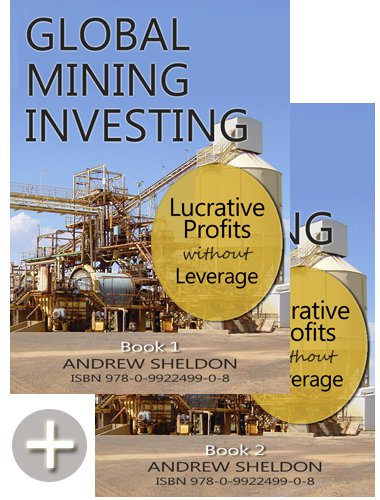Increasingly I am seeing the question being asked -
How high is the gold price going? Its a great question. A great people are inclined to take a punt and say some huge number in the future, though few people are able to defend these numbers. I think fewer still understand the fundamentals underpinning gold. I have written so much on this subject - I wont repeat - other to say that - yes, supply and demand are driving the market price, but ultimately it has nothing to do with the metal balance calculations published by the World Gold Council. The reason those numbers mean nothing to traders is because those numbers are NET figures calculated for a market at two (annual) points only, and certainly not the points which you bought and sold your investment.
The reason why the gold price does not depend on falling gold supplies from South Africa/Australia, growth in demand from India, etc, is that the higher the price goes, the less gold Indians can buy. Indians just dont control much of the global capital. Nor do they have the leverage that fund managers have. More important than that is the fact that the investment that drives gold prices is the more transient 'speculative demand' for gold by investment funds, hedge funds and the like.
So back to the question.....There is actually a lovely correlation between the gold price and the Dow Jones Industrial Average (DJIA) Index that has stood the test of time. The index has proven itsel in the 3 speculative precious metals booms in the 1920s, the 1950-60s and now the 1990-2000s. It will be apparent from the following chart that gold is not just going anywhere - but that it has a target in mind. Mind you that index includes the DJIA as a variable, so its conjecture where that number is going. You will have to see my market commentary blog(
http://market-action.blogspot.com/) on the Dow outlook to see my projections for that index.
Based on my price target for the DJIA of 11,650pts, I can see gold rising to around $US2,200/oz. Some people will laugh off this projection, but I make the following points:
1.
Credit markets are highly inflated. There is so much money in the market,
2.
Inflation over 35 years: Its been thirty five years since gold last peaked, so thats alot of inflation to factor into the present day price of gold, and dont be so sure that the published CPI is a legitimate measure of inflation. Governments have been fiddling with the books since before you were sucking your thumb.
3.
Small size of gold market: The total gold market is worth just twice the value of Microsoft. There is few other places to place your money. Other precious metals have significant industrial demand bases, and are less liquid. The reason why gold is attractive is that there are all types of funds available.
You might think my projection for the Dow Jones falling to 11,650pts is too pessimistic, but actually that is my conservative scenario. If I used the current DJIA Index value of 12589.07 points (8 Jan-08), we would need to look at a gold price closer to $US2,600/oz.
Of course the argument is not whether we should be pessimistic or conservative, but realistic. So to be realistic, I would expect the Fed to drop interest rates slightly prior to the next US election, or at least keep them on hold. We have already seen tacit announcements by the US government to provide some level of support to the credit market. Though its hard to see a bale out on the scale necessary. With a rising threat of inflation I think there will some a point in the next months (after the US election) when the Fed will be forced to raise interest rates. I would expect it to trail the inflation in this respect so as to not cause serious economic malaise.
Periods of inflation are historically periods of flat corporate earnings, though at first businesses actually benefit from asset inflation, but earnings falter with basic cost of living inflation (food, oil, rent). That is the stage where we are now. So I see flat earnings being offset by rising inflation, causing equiities to have swings to provide yield incentives to investors, but otherwise I see broad market equities going sideways for years to come. The excitement will be in the gold market.
Based on this chart, you would have started buying gold or gold stocks back in 2000, and you would have made excellent returns, though base metals soon over-shot gold. Clearly this ratio will be a good indicator of when to sell as well.
The gold-DJIA ratio is not the only measure of when to buy and sell gold. Next we will consider the gold-oil ratio.









![[Most Recent Quotes from www.kitco.com]](http://www.kitconet.com/charts/metals/gold/t24_au_en_usoz_2.gif)
![[Most Recent Quotes from www.kitco.com]](http://www.kitconet.com/charts/metals/silver/t24_ag_en_usoz_2.gif)
![[Most Recent Quotes from www.kitco.com]](http://www.kitconet.com/charts/metals/platinum/t24_pt_en_uskg_2.gif)
![[Most Recent Quotes from www.kitco.com]](http://www.kitconet.com/charts/metals/palladium/t24_pd_en_usoz_2.gif)
2 comments:
An interesting analysis Andrew, I particularly like the insight into the supply of mine processing equipment and the currency issues around stock prices. There are many bloggers in this field but few of them have highlighted these issues. With your permission i may review on our US blog www.agmetalminer.com.
thats fine - please provide a link.
Post a Comment